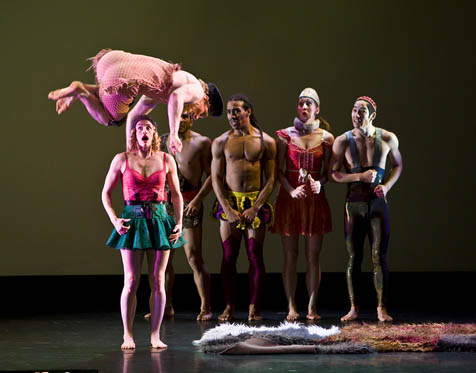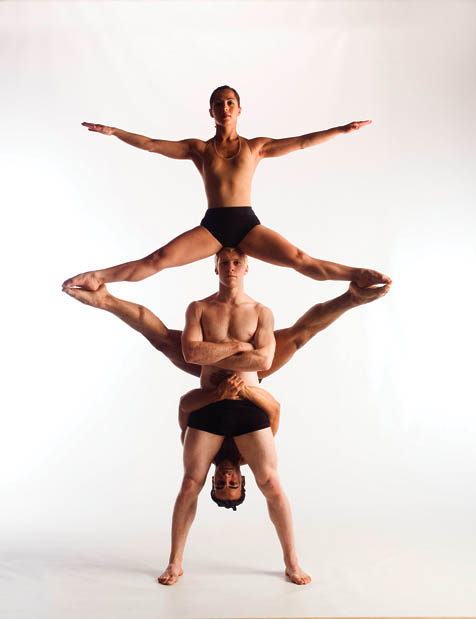Pilobolus
At UCSB's Campbell Hall, Tuesday, October 30.

Although more than 30 years have passed since its founding as a choreographic democracy, collaborative play remains the heart of Pilobolus Dance Company’s work. Tuesday’s program reflected the wide range of the company’s repertoire, from co-artistic director Jonathan Wolken’s classic solo Pseudopodia of 1973, to fellow founder Michael Tracy’s duet Persistence of Memory from this year.
The program opened with Wolken’s B’zyrk (2007), a three-ring circus of goofy antics from six performers kitted out in Liz Prince’s delightfully wacky costumes: rubber body suits, pointy hats, and frilly underpants. As much theater as dance, B’zyrk had the qualities of child’s play: Competition for attention yielded to love triangles, fights, bouts of stage fright, and slapstick chaos.

In Pseudopodia, Jun Kuribayashi wowed the crowd with lithe, weightless writhings under blood-red light, looking more like a boneless larva than a man. Both of the pieces that came after the intermission-the predictable, sentimental love story Persistence of Memory and the somewhat dated, raging, post-punk Megawatt (2004)-incorporated classic Pilobolus weight-sharing and impressive acrobatic feats, but they suffered for coming after Rushes (2007), the stunning group work by Israeli guest choreographer Inbal Pinto that ended the first half of the show.
In Rushes, the curtains opened to reveal a circle of white, child-sized wooden chairs, a bare light bulb hanging over its center, and a collection of mismatched figures clad in black. Statuesque Andrew Herro was a looming, hunchbacked character in an Edward Gorey-inspired landscape of held breath and foreboding stillness. When Herro blew on two women seated across the circle, their heads snapped over the backs of their chairs and hung lifeless. One surreal scene gave way to another of increasingly deep tenderness: A woman glided silently across the stage in slippery socks, a man with a leather suitcase lay buried in a pile of chairs, then rose to walk, every limb bearing furniture. In this preverbal, enchanted world, the chairs themselves became figures in a geometric dance, wheeling and gliding in perfect concert, guided by the hands of these strangely vulnerable characters. At some point, I realized I had been transported deep into a world of creation and mystery I had rarely known since my childhood. As Annika Sheaff reached up in the final moments to turn out the light, I felt that old pang of bedtime, when I didn’t want to go to sleep for fear of missing even a moment of magic.



